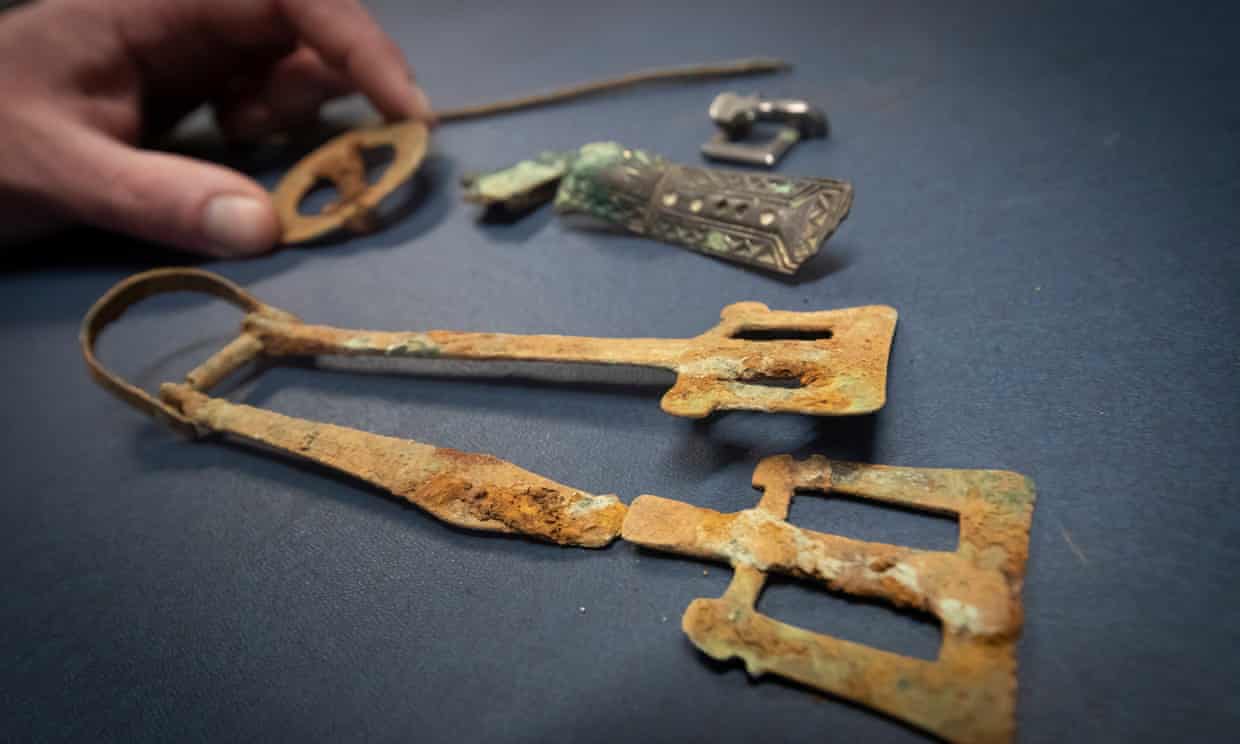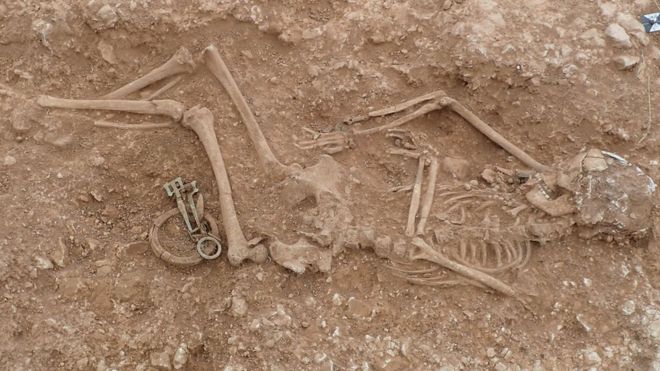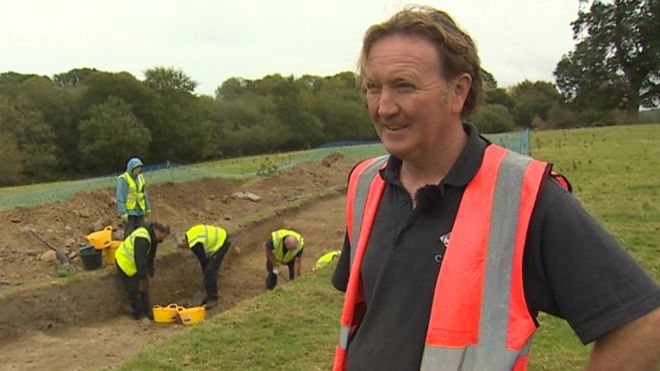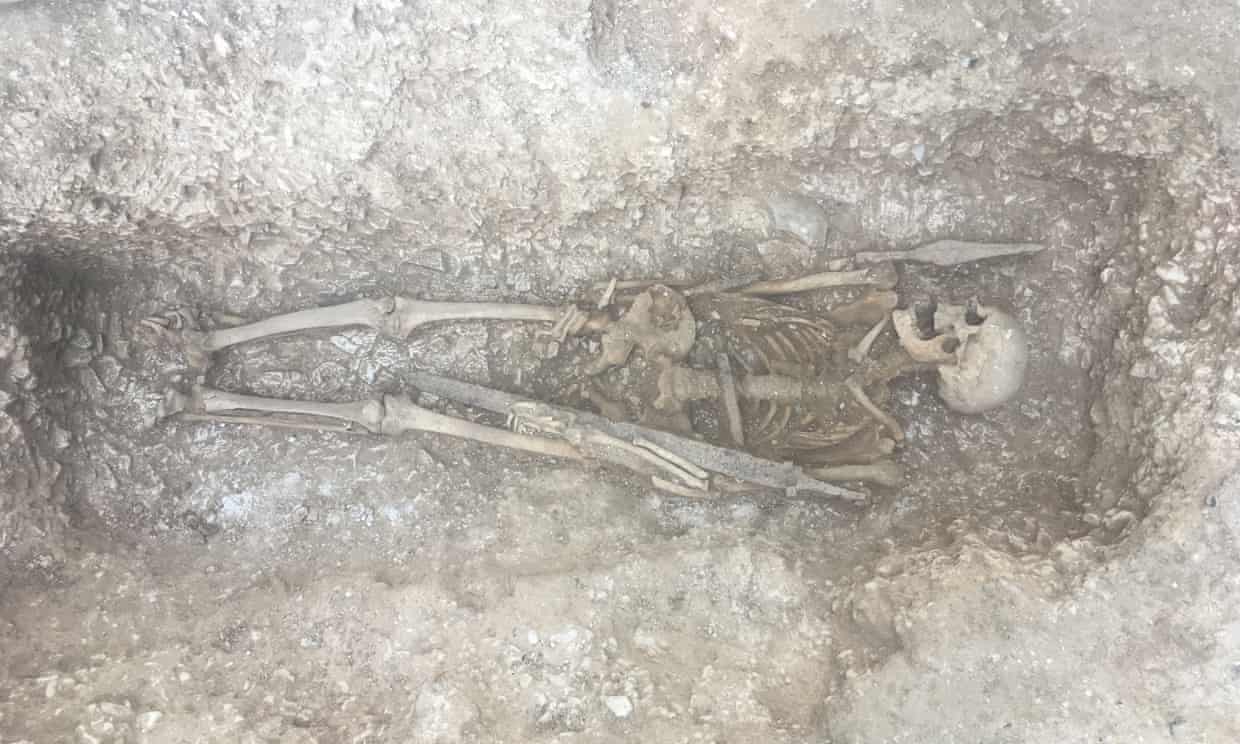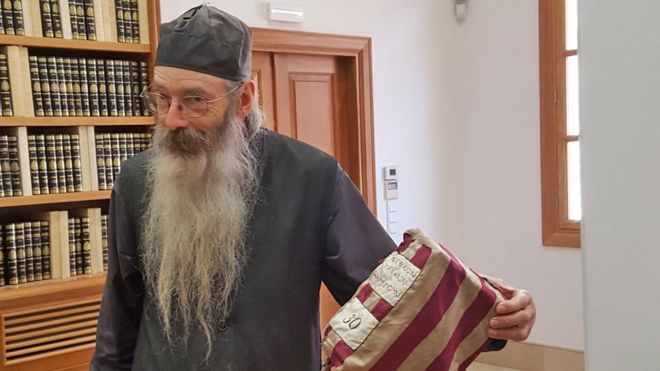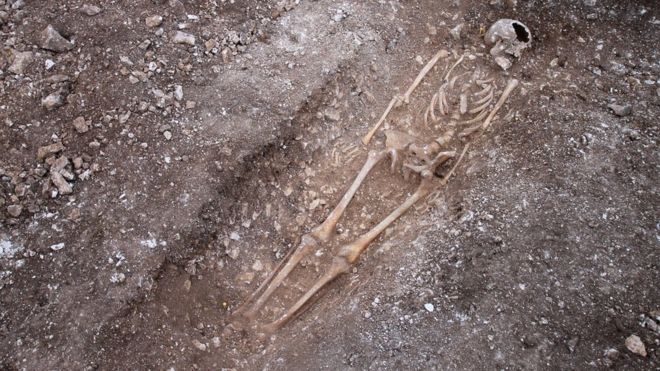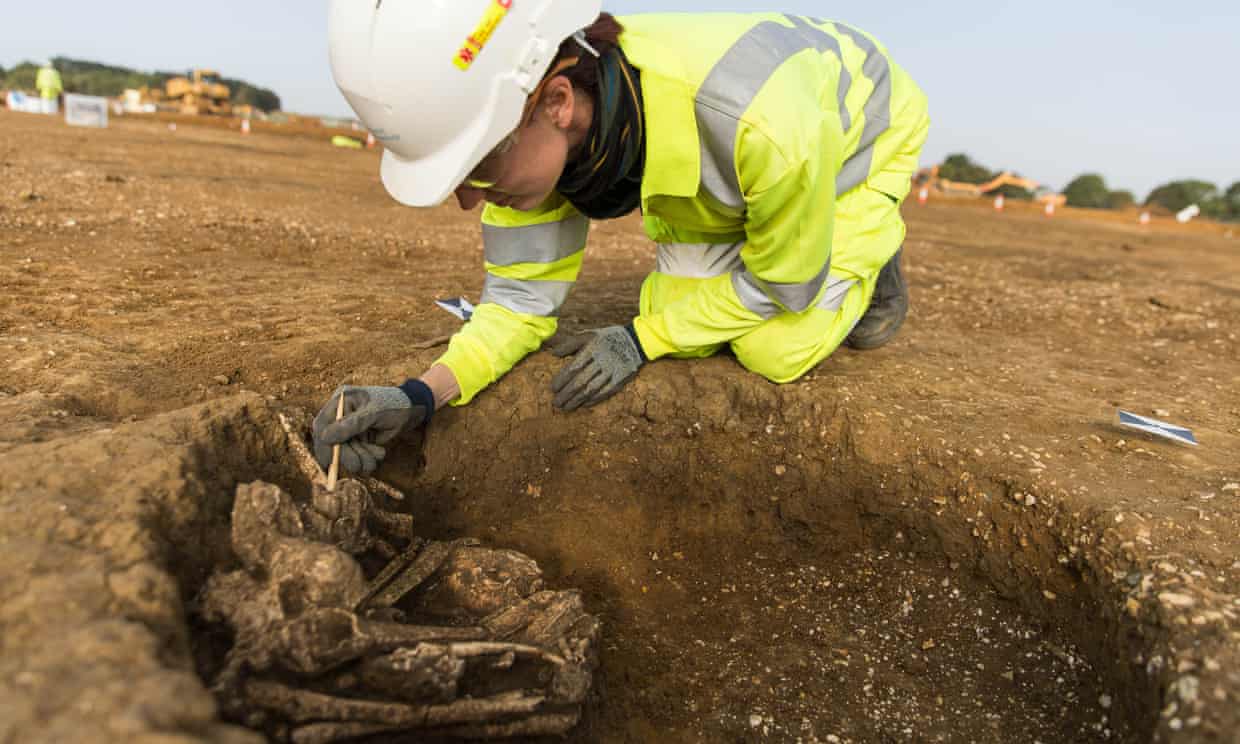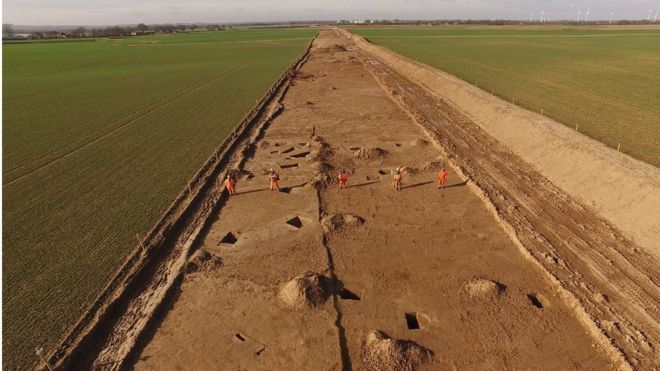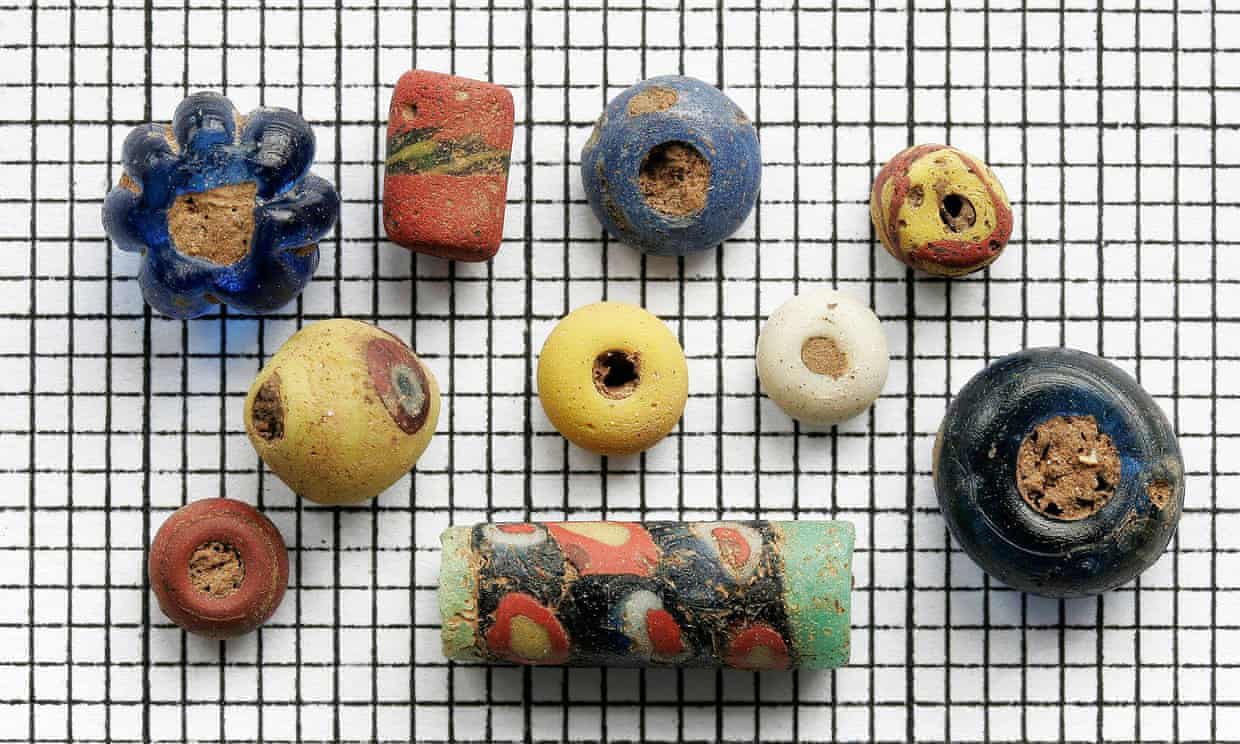Some of the artefacts discovered during excavations in Lincolnshire.
Photograph: Danny Lawson/PA
Archaeologists have uncovered lavish burial sites for women in Lincolnshire from the fifth and sixth centuries, which illustrate how women of the time made themselves resplendent.
Items recovered from the previously unknown Anglo-Saxon cemetery include jewellery made from amber, silver and glass as well as personal grooming items such as tweezers.
Dr Hugh Willmott, senior lecturer in European historical archaeology from Sheffield University and a dig leader, said: “These women wore necklaces made from sometimes hundreds of amber, glass and rock crystal beads, used personal items such as tweezers, carried fabric bags held open by elephant ivory rings, and wore exquisitely decorated brooches to fasten their clothing.
Read the rest of this article...
